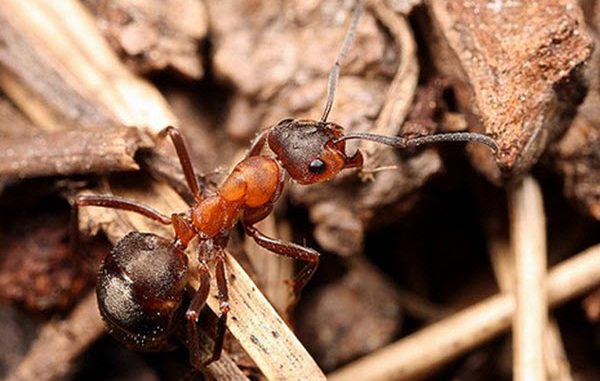
A new study has revealed that wood ants within Formica paralugubris colonies create a potent anti-fungal concoction to protect their home from pathogen attacks. This medicine is made from a combination of resin collected from trees and an acid excreted by the ants own bodies.
Background
Ants of the species F. paralugubris live in large colonies consisting of hundreds of thousands of individual ants. The ants live close together in a warm and humid environment, and they store a lot of dead insects within the colony to have food available. All these factors help to increase the risk of disease outbreaks.
Many ant species that live in similar conditions mitigate the risk of disease with incessant cleaning of the colony and grooming of each other. Wood ants are doing this too, but they also have something else in their tool box – antimicrobial resin that they collect from trees and bring back to the colony.
The initial experiments
Evolutionary biologist Michel Chapuisat and his colleagues suspected that the wood ants weren’t just using the resin pure.
To investigate, the researchers started out by measuring how well pure resin could ward off Metarhizium brunneum, a type of deadly fungus known to infect and kill ants. This was then compared to the capacity of resin that had been stored with wood ants for two weeks.
The experiment showed a striking difference between pure resin and ant-exposed resin. In petri dishes covered with M. brunneum, the ant-exposed resin created a 50% larger fungus free area compared to the pure resin.
The researchers then checked if stones and twigs would get any antifungal boost from being stored with wood ants, and the result was negative. So, it looked very much as if the wood ants were doing something to resin that they weren’t doing to stones and twigs.
The experimentation continues
So, what was happening when the ants and the resin got together?
To find out, professor Chapuisat and his team used liquid chromatography to search for any substances left behind by the ants.
One of the substances they encountered was formic acid, which is a caustic substance. Several ant species are known to produce formic acid to fight threats, subdue prey and keep their offspring clean.
When the researchers dipped resin in formic acid, the resulting combo proved to be more capable of warding of the M. brunneum fungus than resin alone. The scientists then checked the effectiveness of glass dipped in formic acid, and this also proved less capable of warding off fungus than the resin + formic acid combination. Clearly, tree resin and formic acid put together was more potent than either of them were separately.
“[The ants] exploit the tree and then they combine it with their own poison,” Chapuisat explains.
Read more
Wood ants produce a potent antimicrobial agent by applying formic acid on tree-collected resin
Published in Ecology and Evolution, Volume 7, Issue 7, April 2017, Pages 2249–2254
Authors:
- Timothée Brütsch, Department of Ecology and Evolution, University of Lausanne, Biophore, UNIL-Sorge, Lausanne, Switzerland
- Geoffrey Jaffuel, Department of Ecology and Evolution, University of Lausanne, Biophore, UNIL-Sorge, Lausanne, Switzerland / FARCE, Institute of Biology, University of Neuchâtel, Neuchâtel, Switzerland
- Armelle Vallat, Institute of Chemistry, NPAC, University of Neuchâtel, Neuchâtel, Switzerland
- Ted C. J. Turlings, FARCE, Institute of Biology, University of Neuchâtel, Neuchâtel, Switzerland
- Michel Chapuisat, Department of Ecology and Evolution, University of Lausanne, Biophore, UNIL-Sorge, Lausanne, Switzerland
